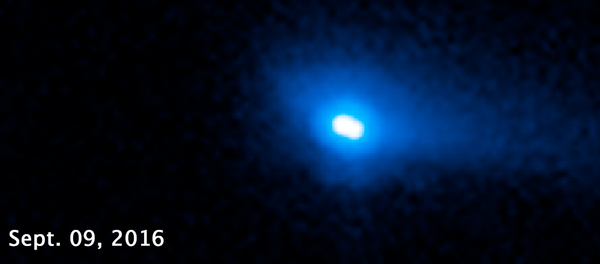On October 12, 2017, the asteroid 2012 TC4 will whizz by Earth. This small non-spherical asteroid has a diameter of just 13 meters approximately. Even at its closest to our planet, a powerful telescope will be required to observe it. It will come within 50,000 km of the Earth at 6:42 am, which by the yardstick of space is quite close.
Luckily, astronomers today closely monitor all unwanted guests and the risks of a collision with Earth. Modern software makes it possible to predict the orbits of celestial bodies and forecast the trajectories of their movement. Participants of the Astronomical Community of the Immanuel Kant Baltic Federal University calculated the orbit of the asteroid 2012 TC4 with the help of Astro-Model – a virtual environment for modeling space phenomena which they developed themselves.
“The verdict is unequivocal. Although this small asteroid will fly near the Earth, its trajectory will miss our planet and there is no threat that it will fall. These results coincide with the estimates of the world’s leading institutions: the risk of its collision with our planet is minuscule, no more than several millionths of a percent,” said Alexei Baigashov, the head of the IKBFU Astronomical Community.
Owing to the efforts of IKBFU scientists, it is already possible to watch the flight of the asteroid 2012 TC4 by our planet in a video simulation of the asteroid’s movement that was modeled with Astro-Model.


